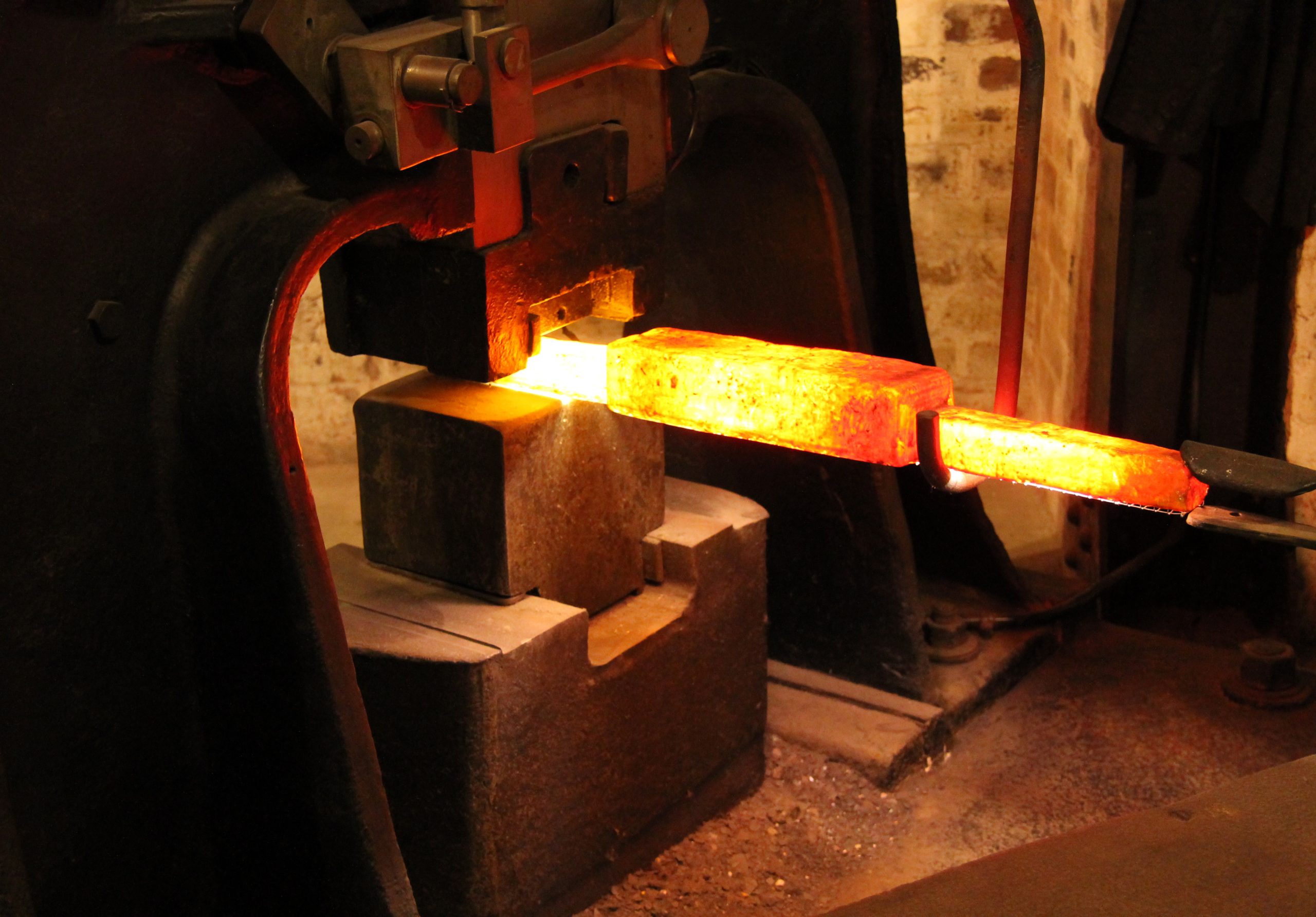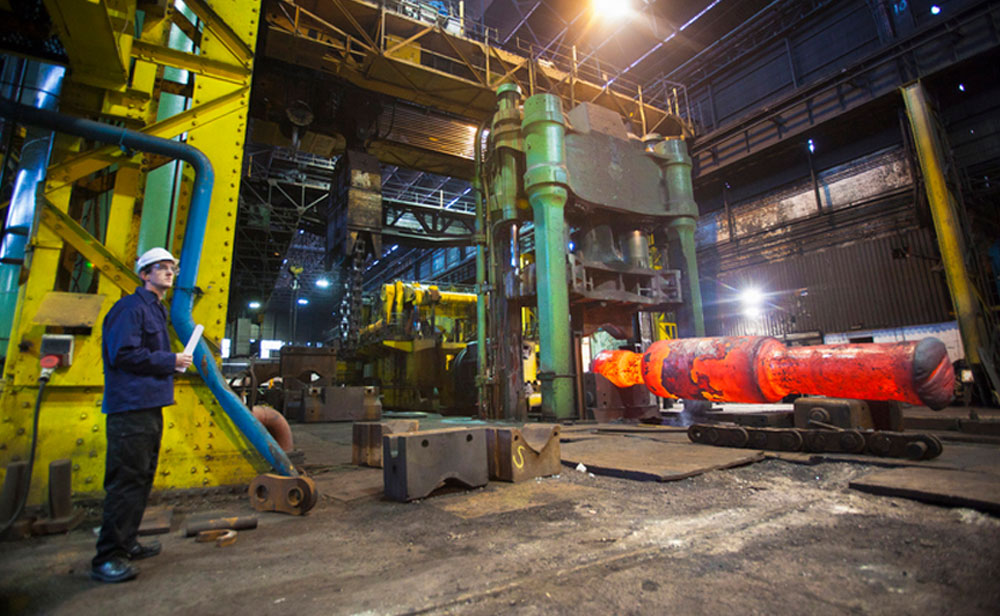Different Techniques For Different Requirements
Different forging techniques are used to achieve the final form for a metal part. Closed die forging or stamping is used for parts that are exact duplicates and high volume. Casting can be used for volume production, but is often used for final shapes with various angles or curvatures. However, open die forging can be used for many cast parts to achieve the same end shape but with far superior mechanical properties, often at a similar cost.
Castings may be used for intricate shapes, providing the stresses on the finished casting will not involve too much load bearing. When the molten metal is poured into a mold, three crystalline shapes will form. The area in contact with the mold will form a chill zone of randomly oriented grains. Next there will be columnar grains, oriented perpendicular to the mold walls, and in the center of the casting will be found an equiaxed zone. Cast parts can be produced from a few ounces to several tons.
The origin of a forging is a casting, in this case as an ingot or billet from a steel mill. Ingots are cast in various shapes, square, rectangular, round or polygonal, as required. This is where the similarity ends in terms of chemistry and mechanical properties. Forgings are crafted quite differently to produce parts with more durable properties for their end use.
Castings of whatever shape will be subject to shrinkage upon solidification. There are methods of reducing the amount of shrinkage but the phenomenon will always occur. Shrinkage in low carbon steel, for example, will run to about 4%, that in aluminum to around 7%. Porosity is a common solidification defect in castings, and its presence will cause problems in load-bearing, corrosion, or abrasion applications.

Advantages Of Open Die Forging
The grain structure of castings is non-uniform, hence heat treatment will not bring about the predetermined changes in properties noted in material that has been through a hot working process. But casting, in the hands of those who are steeped in it, might produce part shapes unattainable by any other method of production unless extensive finish machining is employed.
Open die forging picks up where casting leaves off, and will refine the different grain structures present in the cast ingot or billet through heating and then pressing of the material. Open die forging brings about an inherent superior reliability, improved tolerance capabilities and better machinability. There is greater metallurgical soundness and improved mechanical properties imparted into the material. For the most part, forging stock has been preworked to refine the cast structure and remove defects or porosity from the casting process. This produces what is known as directional alignment, or grain flow, giving important directional properties in strength, ductility, toughness, and fatigue strength. Properly developed grain flow in forgings closely follows the outline of the final part. In contrast, bar stock and plate have unidirectional grain flow, and castings have no grain flow or directional strength.
The degree of structural reliability that is achieved in a forging is as good as, if not better than, that obtained from any other metalworking process. Chemical uniformity is achieved by dispersion of alloys that may have a tendency to segregate, as well as dispersion of nonmetallic inclusions (impurities) that might adversely affect performance of a part under load.
All Metals & Forge Group – Open Die Forged Parts
All metals can effectively be forged, and subsequently heat treated. The range of properties that may be obtained in forged products covers the entire range of ferrous and nonferrous metals. A forged part may undergo subsequent manufacturing processes, such as heat treating and specialized cooling, carburizing, or finish machining.
Forgings, with their uniform structures, will respond well to any chosen form of heat treatment. As such, a uniform range of required properties may be obtained from this combination of forging and subsequent heat treatment. Machinability itself will benefit from these carefully controlled processes. Forged parts are suitable for welding, machining of course, and for surface conditioning by plating, polishing or painting.
In many cases, the cost difference between casting and open die forgings can be modest with forgings sources from All Metals & Forge Group, an ISO 9001:2015 and AS9100D manufacturer of open die forgins and seamless rolled rings. Forgings generally cost more while presenting greater long-term durability that reduces replacement cost and total cost of manufacturing in machinery that requires replacement parts during maintenance cycles.




